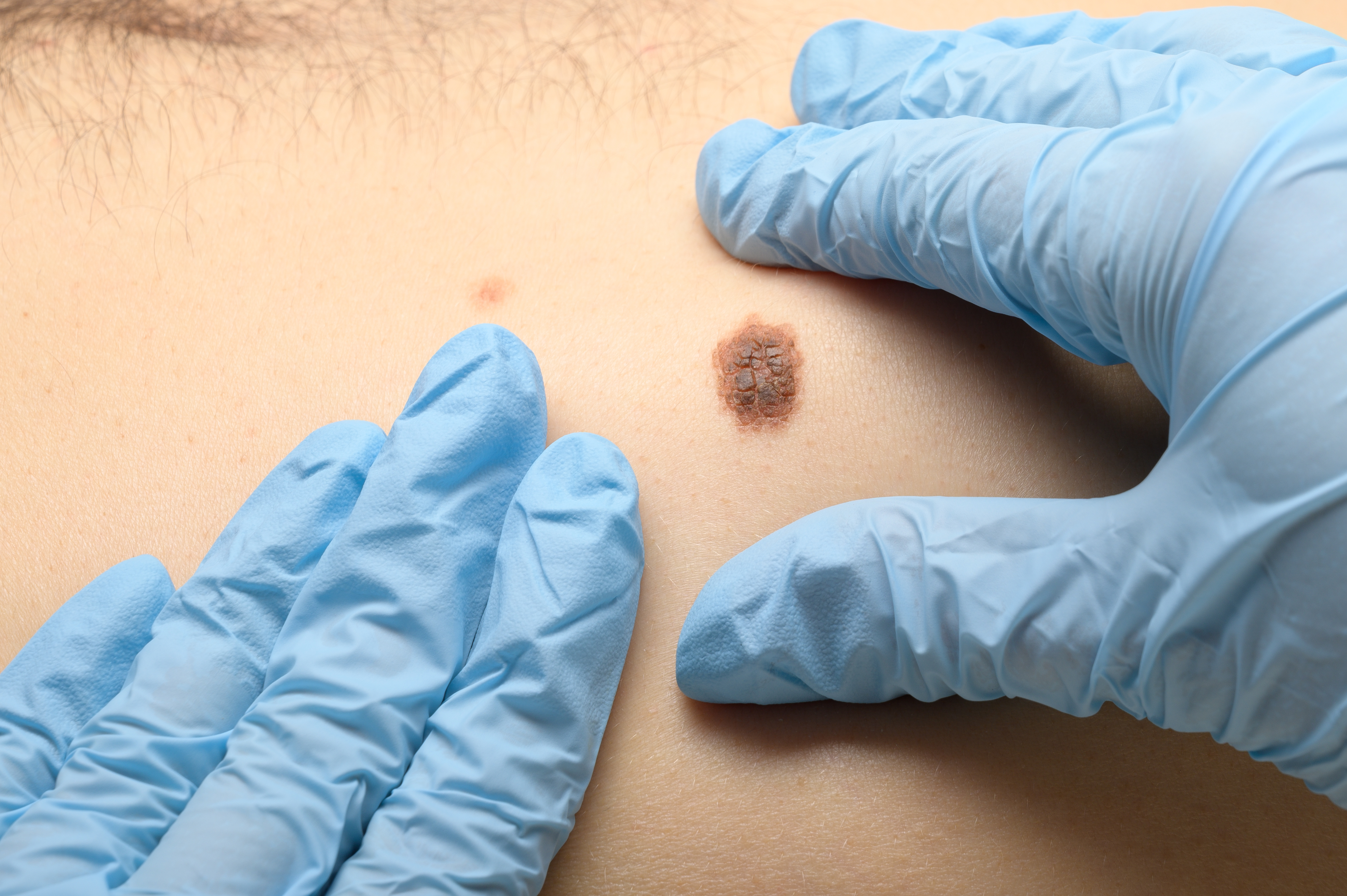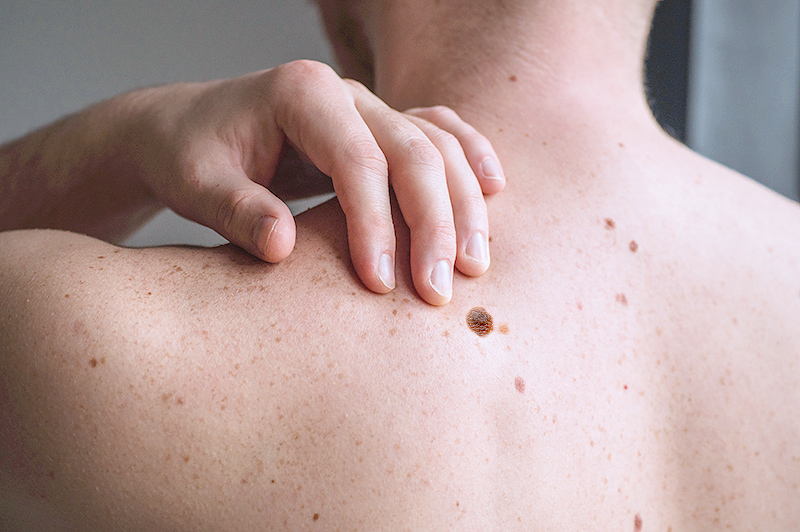Melanoma
Melanoma is overdiagnosed at ‘alarming’ rates. Here’s what to know.
A recent study finds that many Americans are being told they have skin cancer unnecessarily. Experts weigh in on why that’s happening—and whether you should get an annual screening.
Melanoma diagnoses increased sharply over the years but overall death rates remained flat, a sign that there really isn’t an epidemic of skin cancer, but rather that patients are being overdiagnosed.
More than 80,000 Americans are told each year they have melanoma skin cancer. If that sounds like a lot, it’s because the numbers are six times higher than they were 40 years ago. But rather than resulting from increased environmental risk factors or more thorough detection, experts increasingly attribute the jump to overdiagnosis. A recent paper published in the journal BMJ Evidence-Based Medicine adds to mounting evidence that the majority of people in the United States are receiving melanoma diagnoses unnecessarily. The research suggests that though cells biopsied from their skin may look abnormal under the microscope, they are unlikely to lead to current or future health problems.
“I don’t think enough people understand the potential scope of how much melanoma is overdiagnosed. It’s quite alarming,” says the study’s lead author Adewole Adamson, a dermatologist at Dell Medical School at the University of Texas at Austin. “You’re catching tumors that never would have caused harm.”
The researchers conclude that 65 percent of white women and 50 percent of white men are overdiagnosed after they compared overall mortality rates with the lifetime risk of receiving a melanoma diagnosis. The study was limited to white people, a group significantly more likely to develop the disease.
The largest category of overdiagnoses, more than 85 percent, happened with the thinnest moles on the outermost layer of the skin, known as stage 0 or in situ cancers, the study found.
Overdiagnosis is one of the most harmful and costly problems in medicine, according to an editorial published several years ago. This is because it leads to unnecessary treatments, with the resulting financial costs and scarring. Patients diagnosed with melanoma may not be able to buy life insurance. And people learning they have cancer often experience an intensive fear that can last a lifetime.
“Patients talk about their fear of dying, fear of the sun, fear of the cancer coming back. Some make drastic decisions about whether they are going to get married or have kids,” Adamson says. “We are harming a significant number of people.”
Cancers that really aren’t
Melanoma is the most dangerous form of skin cancer, because in later stages it can spread throughout the body and in a small percentage of cases leads to death.
When dermatologists notice moles on a patient they are uncertain about, they take a biopsy and send it to a pathologist who reviews the cells under a high-powered microscope. If the diagnosis comes back as cancer, the patient returns to the doctor to remove the entire growth and a small area around it.
“It’s a bigger surgery with a bigger scar” than the biopsy sample, says Nicholas Gulati, director of the Early Detection of Skin Cancer Clinic at the Icahn School of Medicine at Mount Sinai in New York.
In many cases, diagnosing melanoma is a judgment call made by pathologists.
“In every organ system—not just skin—there are things that look like cancer…under the microscope,” but don’t in fact behave like cancer, says Earl Glusac, a dermatopathology researcher at Yale Cancer Center who detailed his concerns about melanoma overdiagnosis more than a decade ago.
A review article concluded that existing standards fail to properly distinguish the skin growths that are actually innocuous. That many are indeed harmless was documented in a study published in June that concludes people with melanoma in situ actually live longer than those without the diagnosis, which indicates “significant detection of low-risk disease among health-seeking individuals.”
Glusac believes a key reason behind the rise in overdiagnoses of early melanomas is that more people are being screened for skin cancer; with more moles examined, more fall into this gray category. Additionally, for reasons that are unclear, dermatology conventions have changed the size of moles that should be biopsied. According to Glusac, dermatologists once limited testing to moles the size of a dime or larger while now they’ll test growths at one-fifth that size.

Glusac also points to the growing problem of pathologists calling early lesions melanomas to avoid potential malpractice judgements, as melanoma is one of the leading categories of pathology lawsuits.
“No dermatologist wants to see someone walk in and then out of their office with something that could be a melanoma they haven’t sampled,” Glusac says. “And pathologists don’t want to miss a melanoma—someone could die as a result of your mistake.”
Most people shouldn’t get annual screens
No clinical trials have been conducted to document the effectiveness of screening everyone to spot these early cancers. A panel of experts at the U.S. Preventive Services Task Force concluded in April against recommending regular skin cancer screens for everyone.
Some groups, such as the nonprofit Skin Cancer Foundation, nonetheless advocate annual skin checks. The American Academy of Dermatology, comprised of medical professionals, does not take that stand, but the group does encourage its members to conduct periodic screenings among the general public in their communities.
Doctors agree that people should regularly examine their own skin and seek out a dermatologist if they see any spots that are new or changing or that itch or bleed. It’s important to have these growths evaluated with a biopsy, because the doctor can’t tell if it is invasive cancer just by looking at it, Gulati says.
Adamson wants dermatologists to be honest with patients about the lack of science behind regular full-body checks. He also wants a large, long-term clinical trial conducted that follows people who get screened with those who do not to determine if there are in fact any health benefits in finding and removing these stage 0 cancers.
“I think we should not be promoting screening for melanoma in people who have no symptoms,” he says. “There’s been this push to find these melanomas early, and this overdiagnosis is an unintended consequence of that.”
Source
https://www.googleadservices.com/pagead/aclk?sa=L&ai=DChcSEwiRqYOM6ZeFAxUhDgYAHd6DC6kYABABGgJ3cw&ase=2&gclid=Cj0KCQjwqpSwBhClARIsADlZ_TnH5YnEXz9KcPx5KDiI01ILL5_by_1D4Yrr3xsBzpB_MzB5zv3BfkcaAvcaEALw_wcB&ohost=www.google.com&cid=CAESVuD2UdgrlCbMJSKiG6OmMUK7u8Flt0NSZ9Z8AUki3mYlGoW8v3TKGKn-fN9AE3WsovFv-hdSU4V77MeTD0KnXyvQYUenbP9iQj_pEDbQO2L0_VE0O9Xv&sig=AOD64_361Z2zjTl4kazIm19G6FOBkz9Jhw&q&nis=4&adurl&ved=2ahUKEwi7wvyL6ZeFAxU1cPEDHZDwBWkQ0Qx6BAgMEAE
https://www.cancerresearchuk.org/about-cancer/melanoma#:~:text=Melanoma%20is%20a%20type%20of,types)%20and%20melanoma%20skin%20cancer.
https://www.mayoclinic.org/diseases-conditions/melanoma/symptoms-causes/syc-20374884
https://www.nhs.uk/conditions/melanoma-skin-cancer/
https://www.cancer.org/cancer/types/melanoma-skin-cancer/about/what-is-melanoma.html
https://www.skincancer.org/skin-cancer-information/melanoma/




































